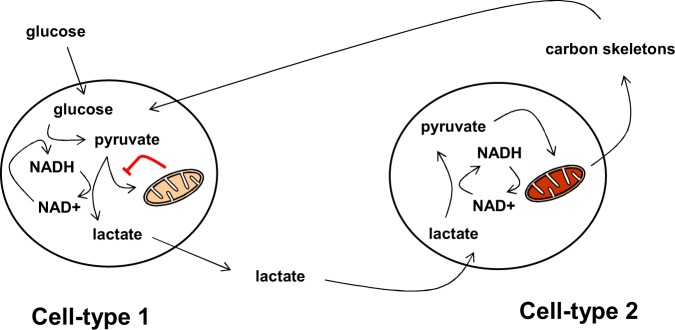Fig. 1.
Hypothetical scheme for metabolite sharing to alleviate the burden of mitochondrial dysfunction or overload in a given cell type. In cell-type 1, glucose is metabolized by glycolysis, but the capacity of mitochondria to process the resulting pyruvate (and NADH) is limited (denoted by the pale brown colour). Instead the pyruvate is mostly converted to lactate, in the process also regenerating NAD+. Lactate excreted from cell-type 1 is imported into cell-type 2, where mitochondrial capacity is higher (denoted by the darker brown colour), allowing it to be fully processed, yielding carbon skeletons for biosynthesis, also in cell-type 1. NADH is indirectly imported into mitochondria in cell-type 2 via the shuttle system, and converted back to NAD+ by the RC. A similar type of metabolic co-operation is hypothesized in tumours, whereby lactate is secreted from cells at the core of the tumour, due to the inhibition of mitochondrial functions by hypoxia, but is then processed by less hypoxic cells at the tumour periphery.

